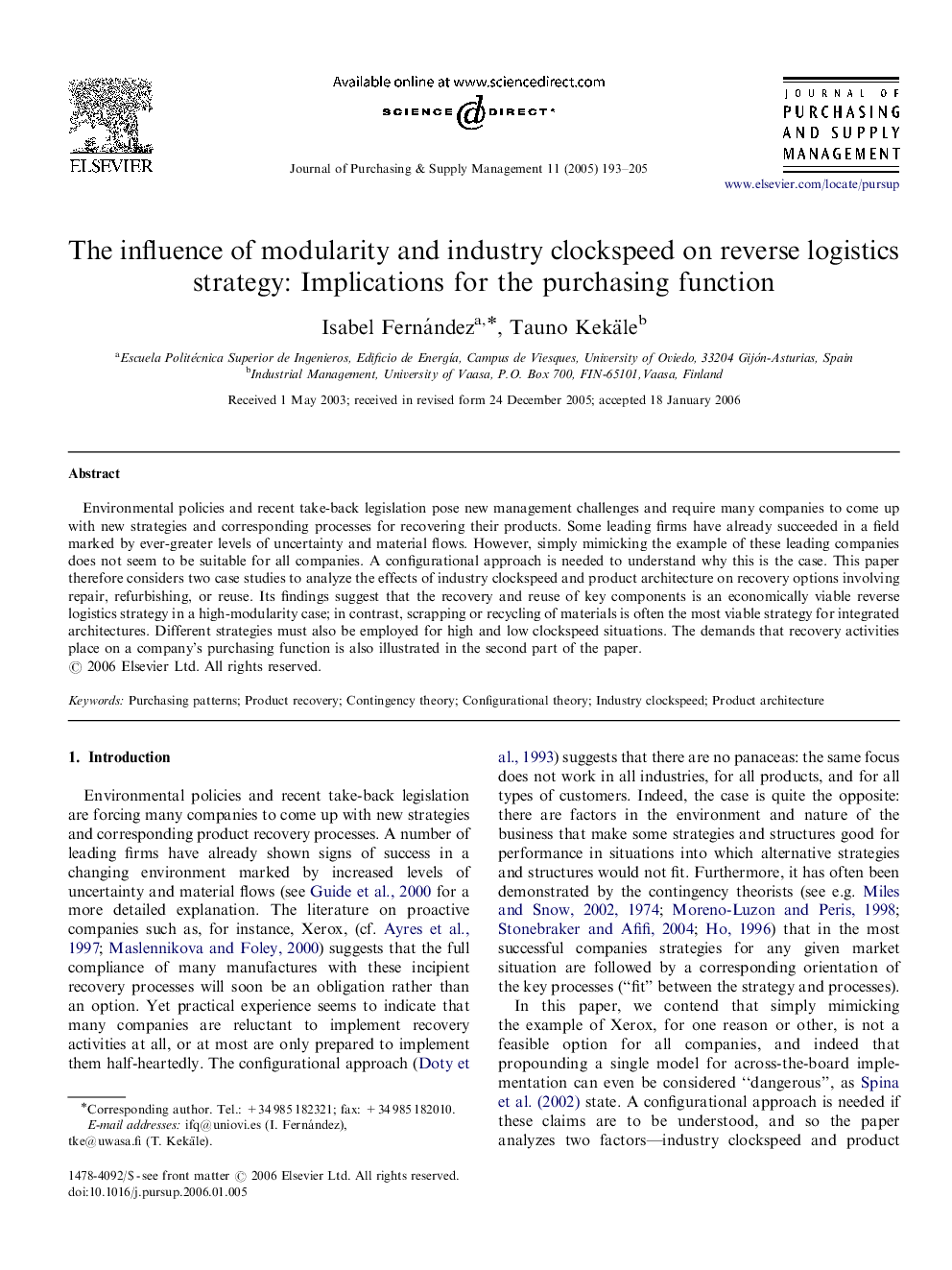| Article ID | Journal | Published Year | Pages | File Type |
|---|---|---|---|---|
| 10494349 | Journal of Purchasing and Supply Management | 2005 | 13 Pages |
Abstract
Environmental policies and recent take-back legislation pose new management challenges and require many companies to come up with new strategies and corresponding processes for recovering their products. Some leading firms have already succeeded in a field marked by ever-greater levels of uncertainty and material flows. However, simply mimicking the example of these leading companies does not seem to be suitable for all companies. A configurational approach is needed to understand why this is the case. This paper therefore considers two case studies to analyze the effects of industry clockspeed and product architecture on recovery options involving repair, refurbishing, or reuse. Its findings suggest that the recovery and reuse of key components is an economically viable reverse logistics strategy in a high-modularity case; in contrast, scrapping or recycling of materials is often the most viable strategy for integrated architectures. Different strategies must also be employed for high and low clockspeed situations. The demands that recovery activities place on a company's purchasing function is also illustrated in the second part of the paper.
Related Topics
Social Sciences and Humanities
Business, Management and Accounting
Business and International Management
Authors
Isabel Fernández, Tauno Kekäle,
